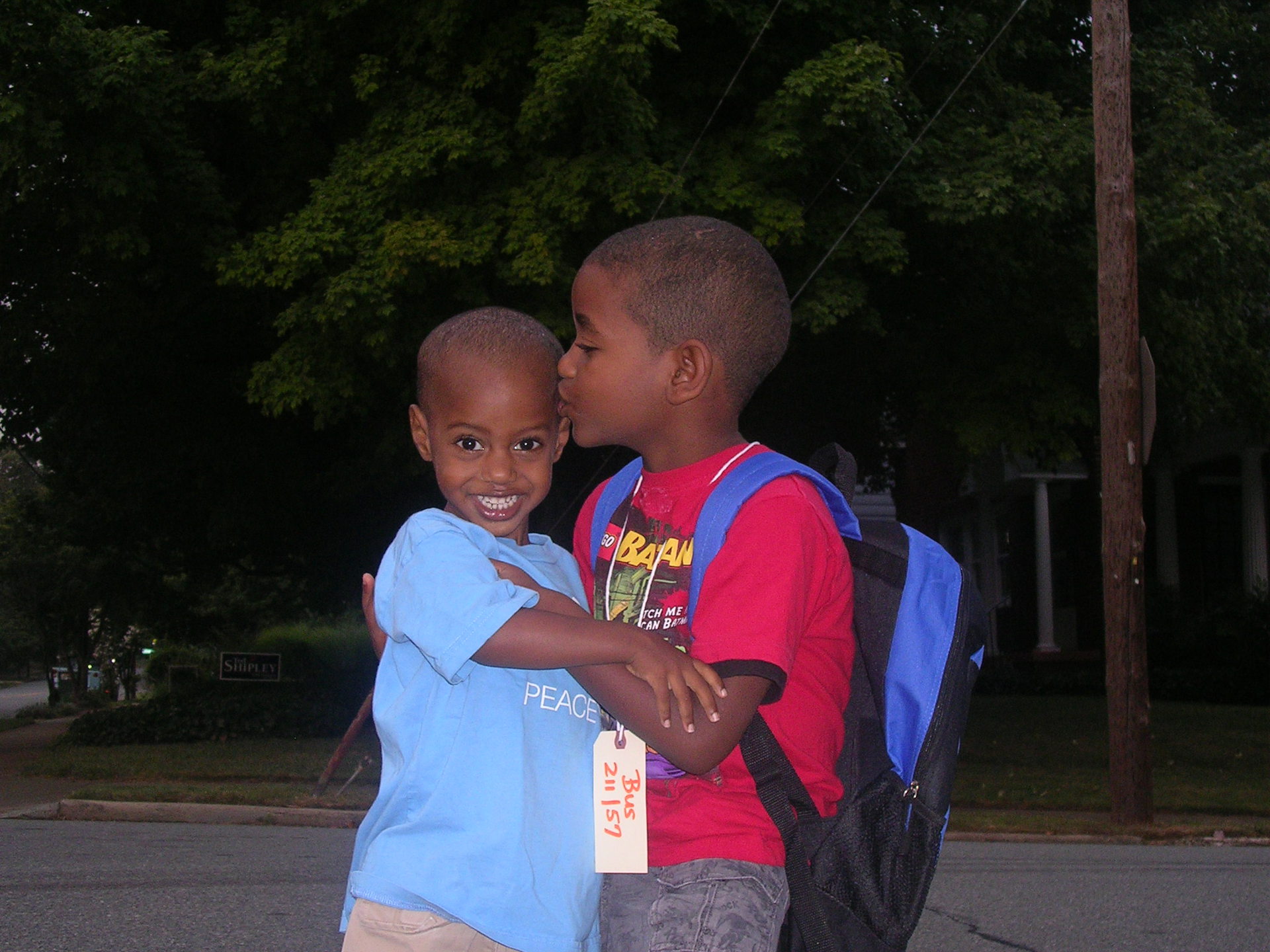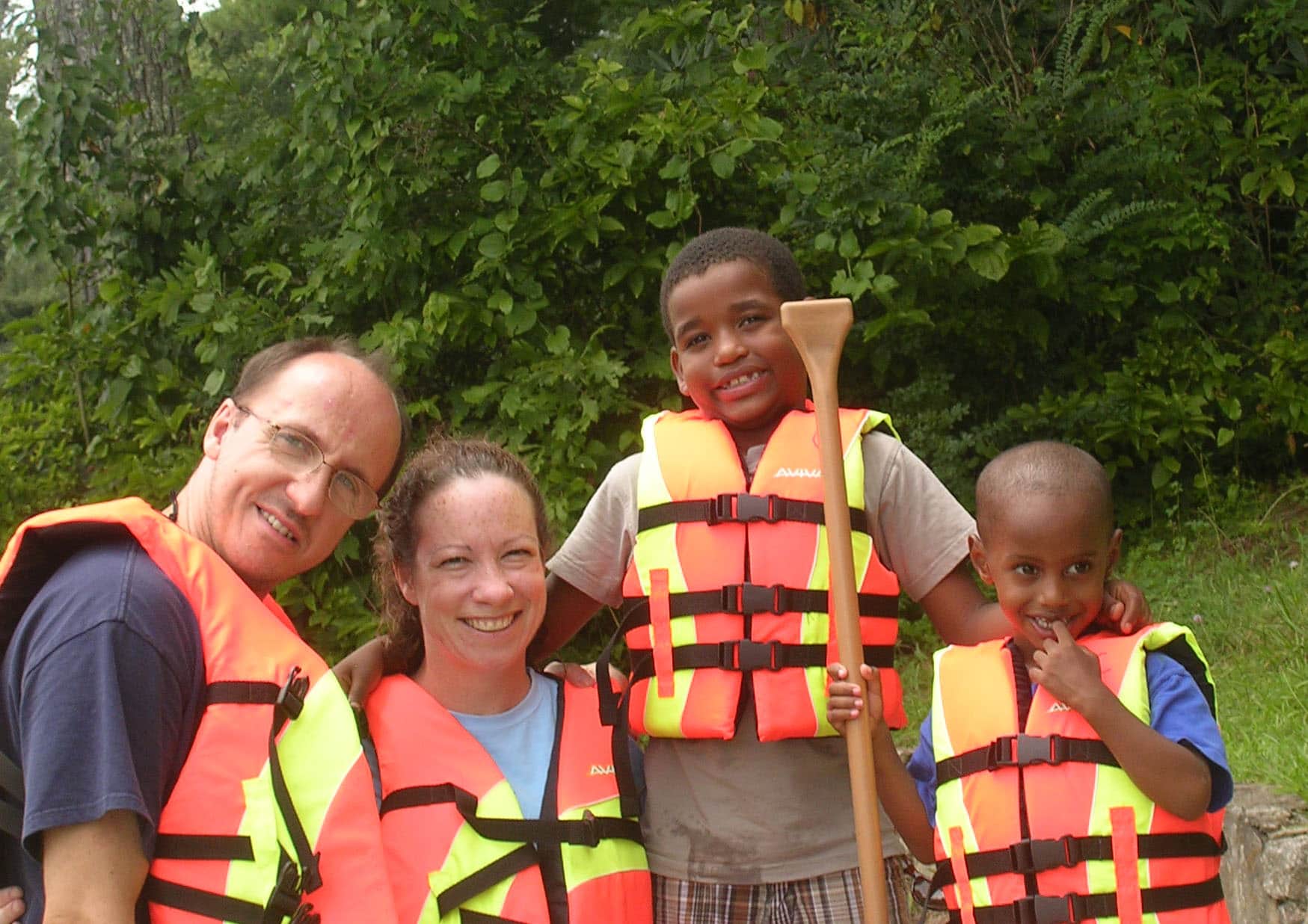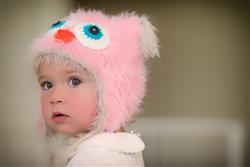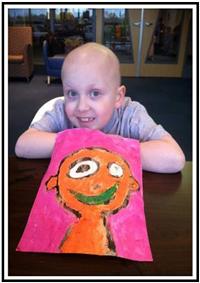The Unexpected Blessings I Found Through Adoption
By Guest Blogger Wendy Harper
As the mother of two boys from Africa, people often tell me they’ve always wanted to adopt. Honestly, that was never my intention. Even when I made my first phone call to an adoption agency, I did so as a see-God-I-am-willing-to-adopt-now-can-I-get-pregnant barter with the Big Guy. And yet, at some point along the way, I began to realize that getting pregnant, naming a child, or mothering a baby was not important. I simply wanted to be a mom. It was a process that started half-way around the world – not in my children’s home country of Ethiopia – but in Russia.
On Thanksgiving Day 2005, my husband and I boarded a plane and traveled half-way around the world to meet a baby who we would call John Paul. The child was in Novokusnetsk, Russia – a.k.a. Siberia. We fell in love, signed the papers, and promised to be back in a few weeks to bring him home forever. (At the time, Russia was a two trip program. From what I understand, Russian adoptions now require three trips.)
When we got home after that first trip, friends immediately wanted to hold a baby shower, but I was hesitant. This was in 2005 – when some regions of Russia were very vocal in their opposition to foreign adoption – and I’d heard the horror stories of failed adoptions. Nothing was certain. But after a few weeks when we got our court date, I thought we were safe. The people at the agency told me that they had never seen adoption fall apart at this stage. So, I booked our airline tickets, relaxed, and told my friends that the baby shower was on. Less than 72 hours before we were to board the plane to head back to Russia, we got a call. The judge in Siberia saw something in our paperwork that she didn’t like and she was not going to allow our adoption to go through. We were devastated.
Slowly, over a period of months, my husband and I pulled ourselves out of the black and looked around. We wanted to be parents and we knew we could be good ones. Surely somewhere there must be a child for us. And by now it was truly a child that we longed for – the age seemed to be so insignificant. That’s when we found our son, Wodajo.
In the adoption world of 2006, Wodajo had a lot of strikes against him. He was a boy; most people who choose gender choose girls. At almost four years of age, he was considered old; most people want a baby – the younger the better. And he was from Ethiopia which, except for Angelia Jolie’s 2005 adoption, was not really a known quantity in adoption circles. At the time, Guatemalan adoptions, while on the verge of closing, were still happening. Vietnam looked like it might be the next place to allow children to be adopted. China’s wait times were not what they are today. And, despite what we went through, certain regions of Russia were still allowing international adoptions. Ethiopia, if anyone knew it at all, was thought of as that place with the big famine back in the 80s. So, Wodajo was placed on a waiting child list. Even today when I think about it, I am amazed. He was then, and continues to be now, so…perfect. How could this boy be a waiting child?
Adopting from Ethiopia in those days was relatively simple and Wodajo’s adoption was no exception. A comparatively easy dossier, one trip, and done. So on Thanksgiving Day 2006 – exactly one year after we boarded a plane for Russia – we left for Ethiopia to bring home the child that would make me a mom.
 Since Wodajo’s homecoming, we’ve been blessed to adopt another child. He is our delightful son Tedla. Like Wodajo, Tedla was a boy, almost 4 years old, and from Southern Ethiopia. But in a testament to how fast things change in international adoption, he was not a waiting child. In fact, we waited eight months for his referral and another four months to bring him home. (It’s my understanding that the wait time for Ethiopia is now several years and that Ethiopia is now a two trip process.)
Since Wodajo’s homecoming, we’ve been blessed to adopt another child. He is our delightful son Tedla. Like Wodajo, Tedla was a boy, almost 4 years old, and from Southern Ethiopia. But in a testament to how fast things change in international adoption, he was not a waiting child. In fact, we waited eight months for his referral and another four months to bring him home. (It’s my understanding that the wait time for Ethiopia is now several years and that Ethiopia is now a two trip process.)
Both of my boys have been home for a while now and I am a few years removed from the process, but here are some things I tell (caution?) people who are considering adoption.
1. Do your homework. Things change fast and just because the adoption process worked one way when so-and-so brought their child home, it does not mean that is how it works today. Work with a reputable social worker and agency that stays on top of the latest developments. At the same time, educate yourself and don’t be afraid to ask questions throughout the process.
2. If you choose to adopt internationally, expect everyone from family to perfect strangers to ask why you did not choose to adopt a child from this country. Listen politely and then encourage them to look into adopting those children.
3. Once you begin the adoption process, people will come out of the wood-work to tell you adoption horror stories or to tell you about how so-and-so got pregnant right after they adopted. Know that the horror stories are worth it and the act of adoption never got anybody pregnant.
4. There are 143 million orphans in the world but the majority of them are not babies. Be open to an older or special needs child. I often joke that although my children were not babies when they came to us, they were potty trained and sleeping through the night.
5. Just as every birth story and child is unique, so too is every adoption and adopted child. Keep an open mind.
And, finally, once your child is home, remember that being an adoptive mom or dad does not make your parental instincts any less valid. Trust them as you would for any other child.
Adoption was never part of my plan. Skipping the baby years was never part of my plan. Ethiopia was never part of my plan. But all of these things that were not “part of my plan” have turned out to be my biggest blessing.

Wendy is the mom of two wonderful boys from Ethiopia. She is currently working to give back to her children’s hometown through her advocacy work for Mudula Water. Mudula Water is committed to breaking the cycle of poverty in Southern Ethiopia. You can read more about the foundation and make a tax deductible donation at http://www.mudulawater.org.
_________________________________
In 2006, there were 731 adoptions from Ethiopia to the U.S. By 2009, that number had grown to 2,275. Source: http://adoption.state.gov/country_information/country_specific_info.php?country-select=ethiopia








They are so little in these pictures! It was fun to see them.